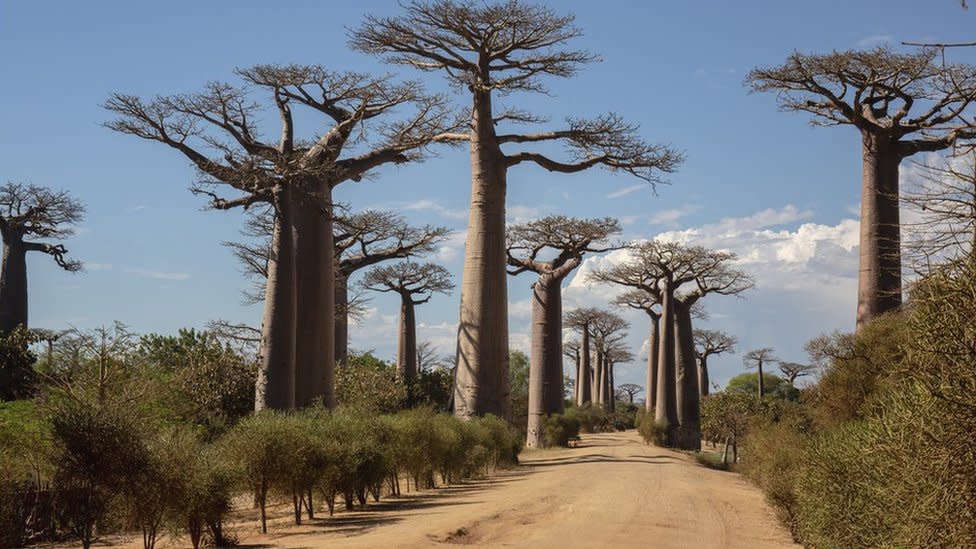Scientists solve mystery of ancient 'tree of life'

Scientists have solved the mystery of the origins of ancient baobab trees.
According to DNA studies, the iconic trees first arose in Madagascar 21 million years ago.
Their seeds were later carried on ocean currents to Australia and also to mainland Africa, evolving into distinct species.
The researchers are calling for greater conservation efforts for the trees, which they say may be closer to extinction than previously thought.
Baobabs are known as "the tree of life" or "upside down tree" for their strange shapes and longevity. They are in trouble because of climate change and widespread deforestation.

Dr Ilia Leitch, of the Royal Botanic Gardens, Kew, worked on the study, alongside her husband, Prof Andrew Leitch, of Queen Mary University of London.
"We have been able to pinpoint the origin of baobabs, which are an iconic keystone species supporting a wide diversity of animals and plants as well as humans," she told the BBC.
"And the data have enabled us to provide important new insights which will inform their conservation to safeguard their future."
The researchers studied eight baobab species, six of which are found in Madagascar, one widespread across Africa, and another in north-west Australia.
They are calling for a higher conservation status for two endangered Malagasy species, including the biggest and most famous of Madagascar's baobabs, the giant baobab.
Baobabs are one of the most remarkable trees on earth, deeply intertwined with local cultures and traditions.
They are also known as "mother of the forest" in Malagasy language, the "upside down tree" and the "tree of life".
The trees can live for thousands of years, growing to a huge size and storing large amounts of water in their trunks to survive through the dry seasons.
Their fruits are regarded as a super food and their trunk can be used to make fibres which are used for ropes or clothing.
They produce large white flowers that open at dusk, attracting bats as pollinators, which travel vast distances to feed on their nectar, and they are important nesting sites for birds.
The research involved collaboration between Wuhan Botanical Garden (China), Royal Botanic Gardens (Kew, UK), University of Antananarivo (Madagascar) and Queen Mary University of London (UK).
Follow Helen on Twitter @hbriggs

